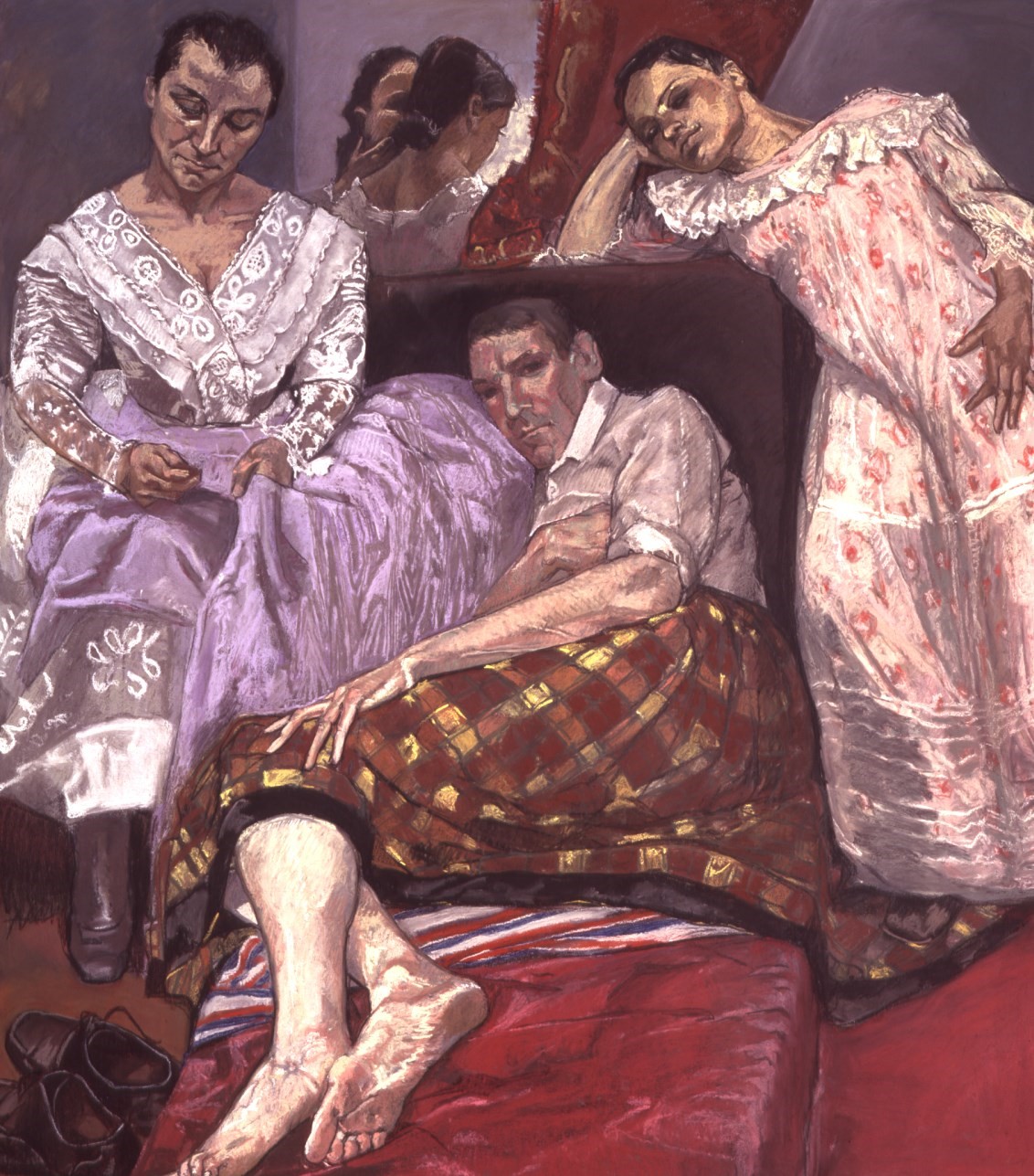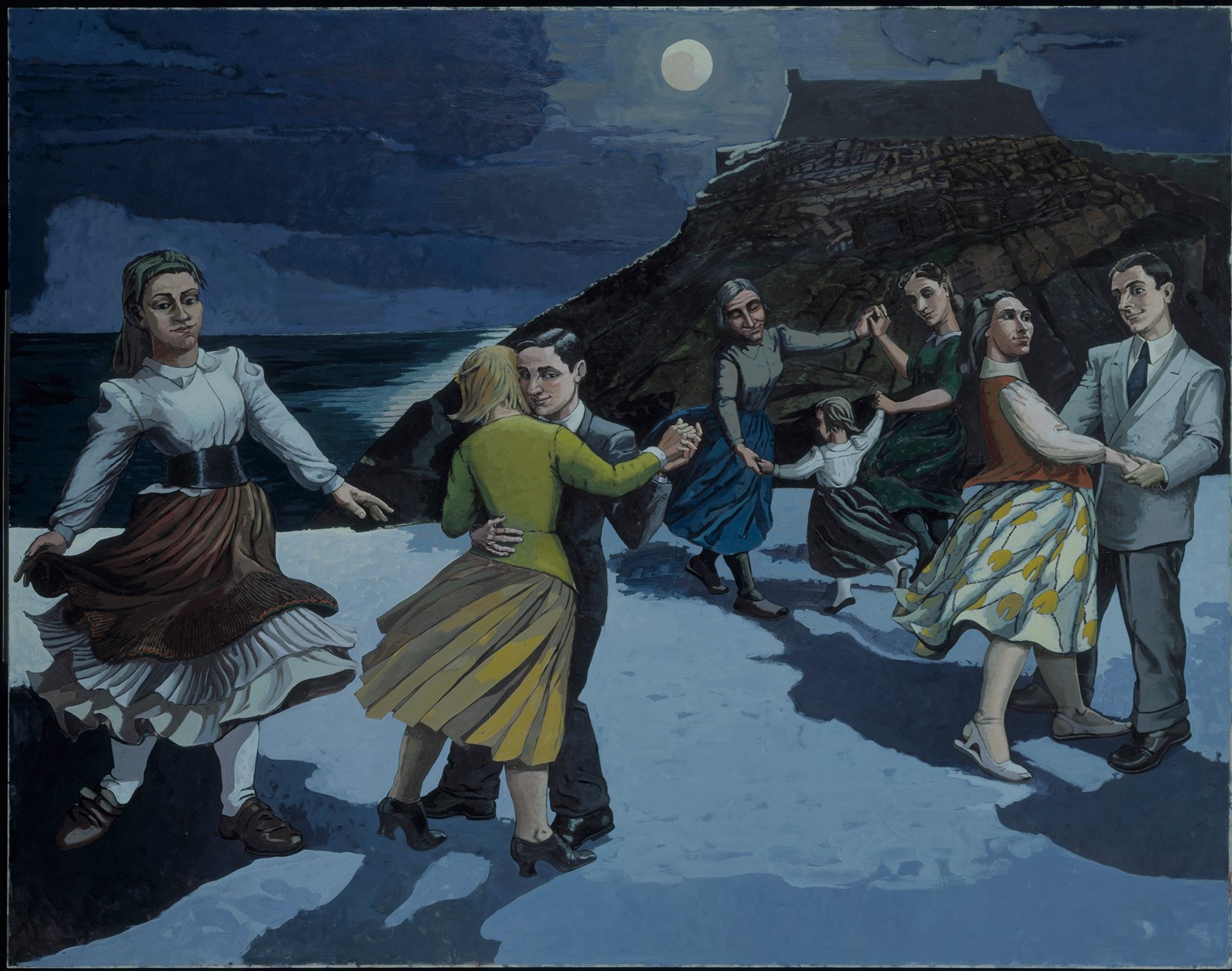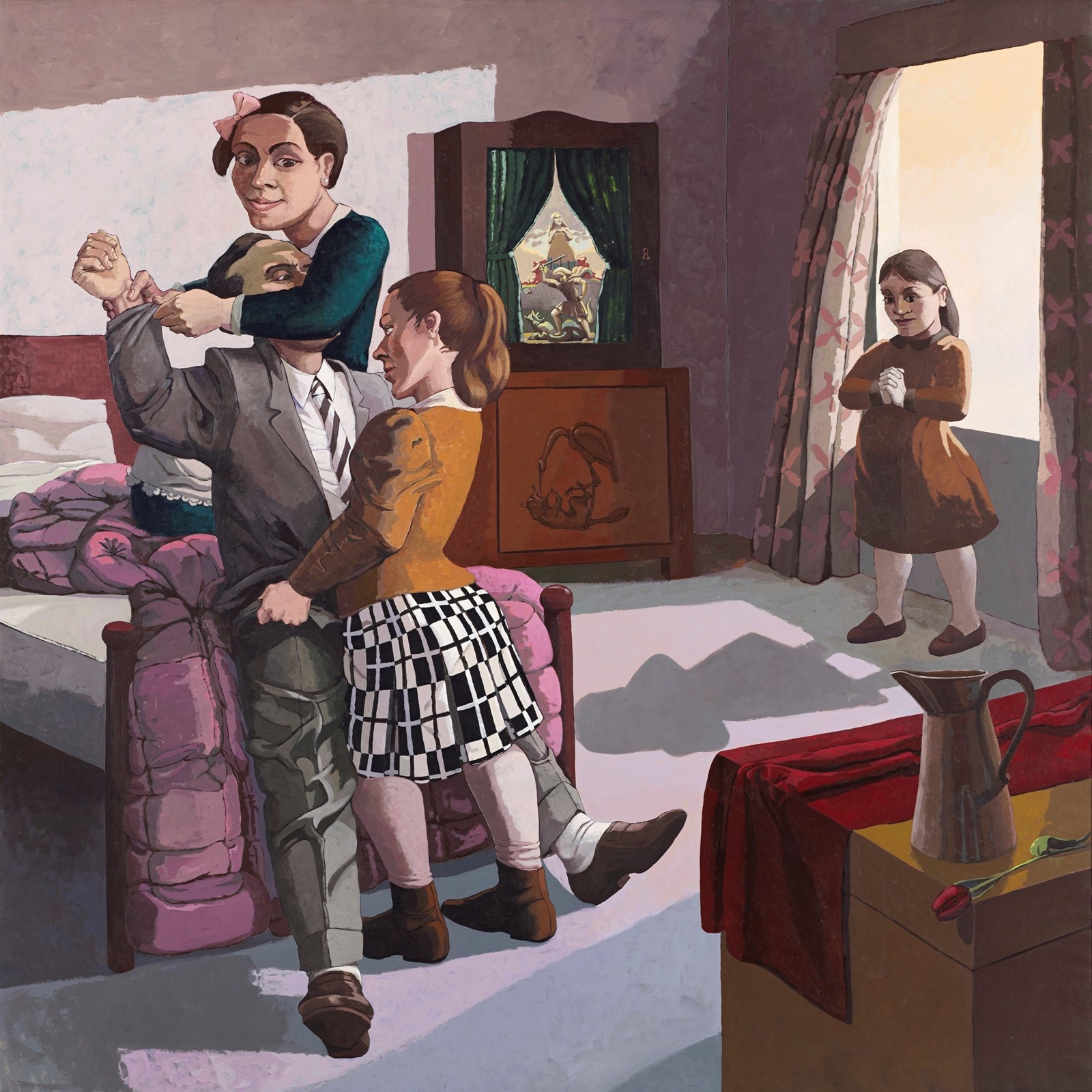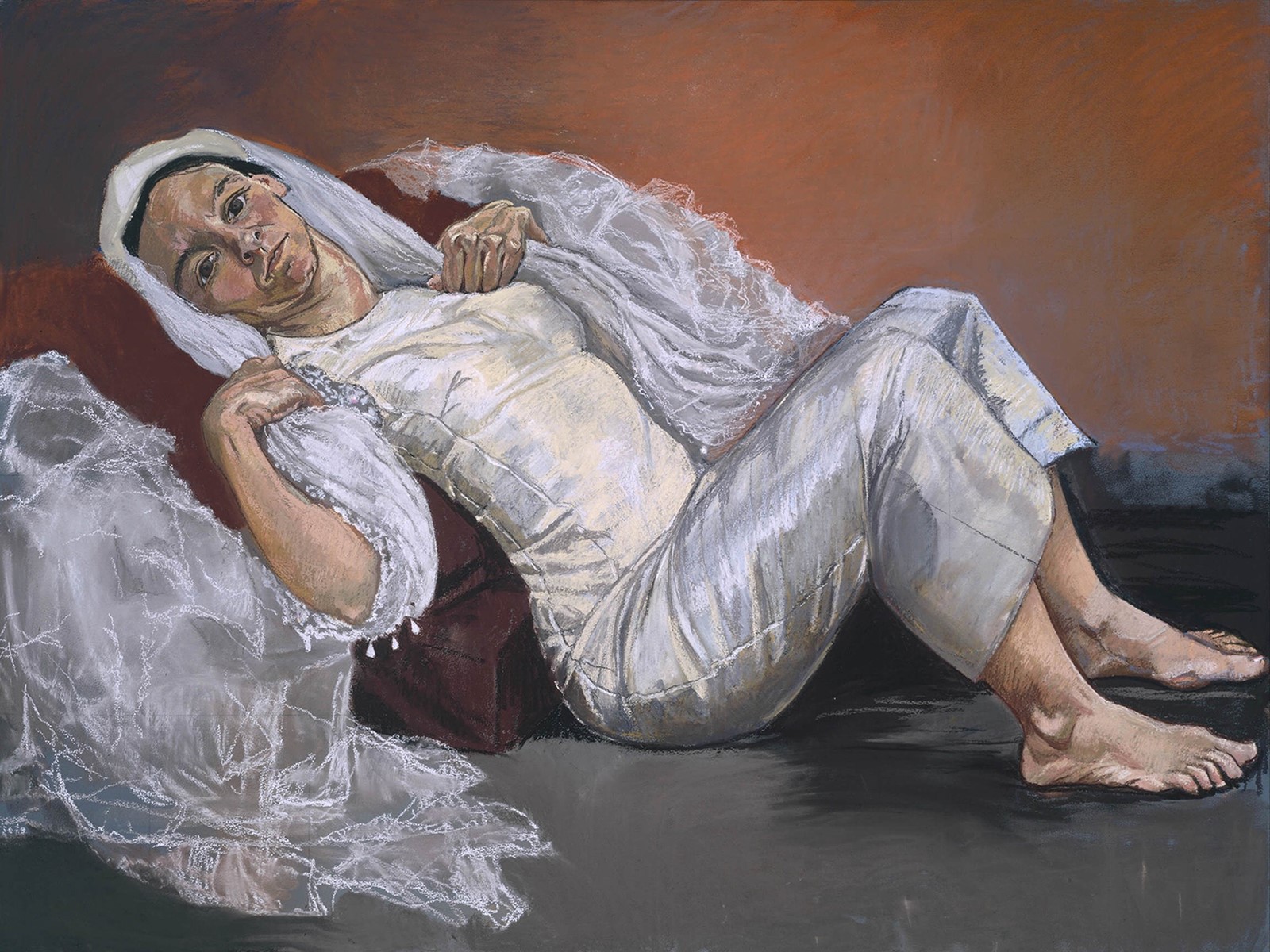This article was originally published on February 28, 2018:
There’s a precarious balance of unease and magic in the work of Paula Rego. The Portugal-born, London-based artist is now 82 (with the added prefix Dame to her name), and has behind her a beguiling and formally breathtaking body of work. This month, she will be showing as part of Tate Britain’s All Too Human: Bacon, Freud and a Century of Painting Life exhibition. It’s a title that feels supremely fitting for her visceral, emotive style. “People tell me that my pictures show what humans do to each other and what they are really all about,” she says. “I’m not aware of that while I’m working. I’m all too human.”
Rego isn’t afraid to take on politicised and frequently dark subject matter: sex trafficking, illegal abortion, and female circumcision are all themes that have made an appearance in her work. They can’t be easy ones to tackle, albeit in a way that raises awareness around their horrors. “Emotions don’t have to come into it,” she says. “I feel what I feel but that’s it. I’m trying to get the picture to be as near the truth as possible.” She adds, “It doesn’t work being other people. It’s best to do what you want. Being me is the only thing I’m good at.”

On feminism …
“I read a lot of books, like Simone de Beauvoir, and they had a great influence on me. I’ve always been a sucker, always doing what I’m told. I became aware of things that I hadn’t been aware of before – like independence. It was exciting to think that women could do what men could do. It felt just. I don’t use the ideas directly but I try and get justice for women... at least in the pictures. Revenge too.
It’s much easier now [for women in the art world]. Much more acceptable to be a woman artist. I was more accepted earlier on in Portugal, despite it being a traditional and repressive regime, than I was in England. I would take my portfolio round to the London galleries and they’d turn the pages without looking at the work. One gallery owner quite liked it but said I’d only go off and have children. I told him I already had three children and it hadn’t stopped me working. That was in the 60s and 70s. It wasn’t till the 80’s that Robert McPherson asked me to show at the Air Gallery. Then Alexis Hunter asked me if I would exhibit with her at the Edward Totah gallery. That’s when things finally took off.”

On how she honed her craft (and gave up smoking) ...
“Mostly drawing. I did a lot of drawing. The pastels are also drawing, but with colour. When I was doing the operas I did them on the floor, starting on the left and working my way across. But later, when I gave up smoking, I stood up to draw. I needed both hands: one to hold the drawing board and the other the pencil. I went from working from the imagination to working from life. I wanted to get it right. You have to look, really look.”
On how Jungian therapy ‘liberated’ her art …
“I was freer to do what I didn’t know I could do. I took more chances in terms of subject matter and technique come to think of it. Everything was allowed in a painting. It’s a risk to change but also exciting, freeing. I could do the things that I wanted to without being too embarrassed… and I did. I became more aware of what was behind the work. The therapy helped the work and painting helped me – revealed to me what was really going on in my head.”

On art as an inspiration, rather than a career …
“A career is like being a doctor, which would be nice, but I was never any good at anything other than drawing. I couldn’t do anything else. A career has a set path – things you are supposed to do to get there. With art there is no map, no guarantee that you will get anywhere, you just have to keep going. A career suggests you can live off your work and that wasn’t true for me until years and years after I started. With art you keep going, because it’s all you can do.”
All Too Human, Bacon, Freud and a Century of Painting Life ran in 2018 at Tate Britain, London.
